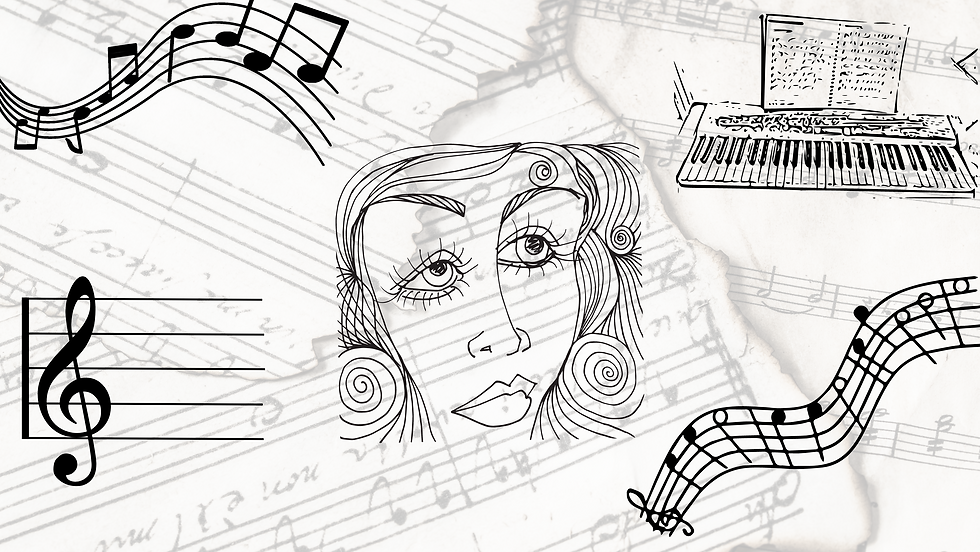Composition basics 101: 12 tools
- Iona Catherine

- Apr 4, 2022
- 3 min read
An introduction to the 12 crucial components of Western Art Music.
Welcome to composition basics 101. This easy to read guide for beginner composers will introduce you to the 12 crucial components of Western Art Music.
Whether you are a classical, baroque, romantic or 20th century inspired composer, composing for movies or for symphony orchestra, being aware of these 12 key elements of musical composition will give your music that extra edge.
1. Pitch
'Pitch' is the notes an instrument plays. There are 12 possible pitches in western art music: Ab, A, Bb, B, C, Db, D, Eb, E, F, Gb, G, or, enharmonically, A, A#, B, C, C#, D, D#, E, F, F#, G, G#. These pitches can be replicated across 10 octaves as higher or lower versions of the same note. Middle C is also known as C4, for example.
2. Melody
A 'melody' is a set of pitches played in a specific order as designated by a composer. It may rise and fall, ebb and flow, be slow or fast, or whatever the composer feels is fitting for the piece they are writing.
3. Harmony
'Harmony' is the combining of multiple pitches. It can result in chords, consonance, dissonance, or a whole range of other sound effects. A 'harmonic progression' is a chain of 'harmonies' one after another.

4. Tonality/Key Signature
'Tonality' is the 'key signature' of a piece of music AKA the pitch and scale that the music centres around. There are many scale systems that can create tonality, including minor, major, modal, tone rows (hello Schoenberg), and more. You can even combine more than one to create bi-tonality, or even tri-tonality! Whichever you pick, you will apply the structure of the scale, aka the specific order of tones and semitones, to a starting pitch to find the notes of your tonality. This pitch may be chosen because of your orchestration or because you simply like the way the pitch sounds in that key.
5. Dynamics
'Dynamics' are the loudness or quietness of a piece. The dynamics of a piece can change during its duration. In western art music the convention is to use the following Italian signals:
FF = Fortissimo = Very Loud
F = Forte = Loud
MF = Mezzo Forte = Medium Loud
MP = Mezzo Piano = Medium Quiet
P = Piano = Quiet
PP = Pianissimo = Very Quiet
6. Timbre
'Timbre' denotes the aural effect instrument choices create. For example, if you combine piano, marimba, and glockenspiel in a fast moving quiet and staccato concert piece, you may end up with a dainty percussive timbre. But if you write a cinematic string section for a romantic kiss scene in a movie, your timbre may be lush and thick.
7. Texture
'Texture' describes the layers of instrumentation and ideas in your piece. There are various words used to describe texture including monophonic (one solo musical idea), homophonic (one musical idea with harmonies), polyphonic (multiple musical ideas and harmonies), and more.






Comments